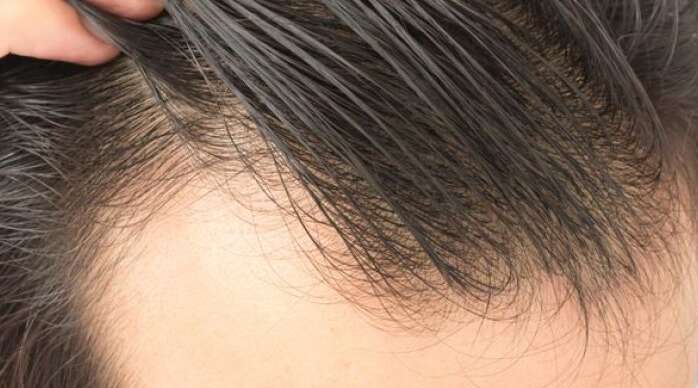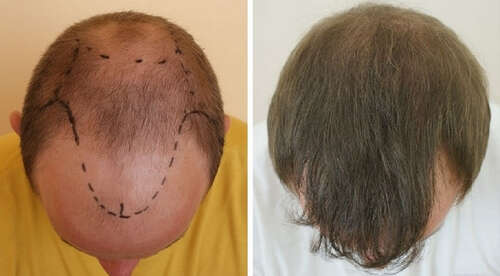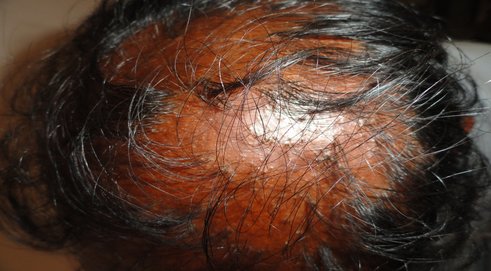What is male pattern hair loss?
Androgenic alopecia is also called male pattern hair loss(MPHL). MPHL is the most common cause of hair loss in men. It happens with progressive loss of terminal hair in a particular way for both males. In males, hair loss starts at the top of the head and side of the head and usually seen as receding of the hairline.
It has both medical line of treatment such as local topical application, oral medication, some special treatment such as micro-needling, platelet-rich plasma therapy, surgical management such as hair transplantation.
What causes male pattern hair loss?
Androgenic alopecia is caused by a combination of a variety of factors. Out of these genetic and hormonal factors are the significant culprits.
There are many receptors present on our everybody cells; for simplicity, consider receptors as doorway or agent on cells through which chemical enzymes or hormones of our body do their work.
We have one hormone called DHT (DIHYDRO TESTOSTERONE), and this is one of the sex hormones present in our body. It also works on many cells through these receptors. There are many receptors present over hair cells too. Out of this 5-alfa 1, and 5-alfa 2 are two important receptors.
After puberty, when DHT starts acting on these receptors, in males who are genetically predisposed or vulnerable starts producing hairs which are progressively smaller in diameter, shorter in length, and lighter in color until eventually the follicles shrink completely and stop producing hair.
Is male pattern hair loss hereditary?
Yes. It is believed this can be inherited from either or both parents.
What are the symptoms of male pattern hair loss?
Men can become aware of scalp hair loss or a receding hairline at any time after puberty. There are usually no symptoms on the scalp. Hair loss may cause significant stress.
What does male pattern hair loss look like?
The usual pattern of hair loss is a receding frontal hairline and loss of hair from the top of the head. Hair in the affected areas are initially smaller in diameter and shorter as compared to hair in unaffected areas before they become absent.
How is male pattern hair loss diagnosed?
The diagnosis is usually based on the history of scalp hair loss on the front/ top of the head or a receding hairline, the pattern of hair loss, and a family history of similar hair loss. The skin on the scalp looks normal on examination. Occasionally blood tests may be carried out.
Can male pattern hair loss be cured?
No, there is no cure. However, it tends to progress very slowly, from several years to decades. An earlier age of onset may lead to quicker progression.
How can male pattern hair loss be treated?
Licensed topical and oral treatments: • Applying 5% minoxidil liquid or foam to the scalp may help to slow down the progression of hair loss and partially restore hair.
The liquid or foam should be applied to the affected scalp (not the hair) using a dropper or pump spray device. It should be spread over the affected area lightly and does not need to be massaged.
Minoxidil can cause skin reactions such as dryness, redness, scaling, and itchiness at the site of application and should not be applied if there are cuts or open wounds.
It needs to be used for at least six months before any benefit may be noted. Any advantage is only maintained for as long as the treatment is applied.
Minoxidil solution may cause an initial hair fall in the first 2-8 weeks of treatment, and this usually subsides when the new hairs start to grow.
In men, finasteride tablets can reduce levels of dihydrotestosterone (DHT hormone), which may slow hair loss and possibly help regrowth of hair. Continuous use for three months is required before a benefit is usually seen.
Decreased libido and erectile problems are recognized side-effects of this treatment.
Any beneficial effects on hair growth will be lost within 6 to 12 months of discontinuing treatment.
Skin camouflage: • Spray preparations containing small pigmented fibers are available from the internet and may help to disguise the condition in some individuals. These preparations, however, may wash away if the hair gets wet, i.e., rain, swimming, perspiration, and they only tend to last between brushing/shampooing.
Surgical treatments: • Surgical treatment is not offered under the NHS, and this can be sought privately. Surgical treatment includes-
- Hair transplantation, a procedure where hair follicles are taken from the back and sides of the scalp and transplanted onto the bald areas; and
- scalp reduction, where a section of the bald area is removed, and the hair-bearing scalp stretched to cover the gap. Tissue expanders may be used to stretch the skin.





